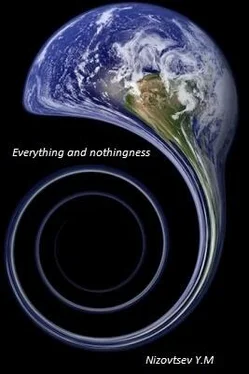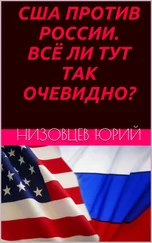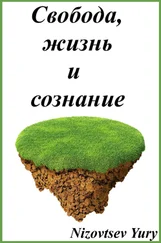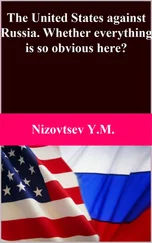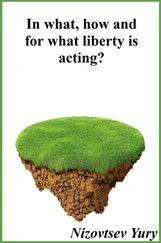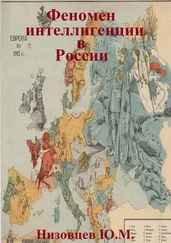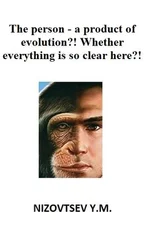Юрий Низовцев - Everything and nothingness
Здесь есть возможность читать онлайн «Юрий Низовцев - Everything and nothingness» — ознакомительный отрывок электронной книги совершенно бесплатно, а после прочтения отрывка купить полную версию. В некоторых случаях можно слушать аудио, скачать через торрент в формате fb2 и присутствует краткое содержание. Издательство: Array SelfPub.ru, Жанр: Философия, История, История, История, beginning_authors, Философия, Биология, Химия, Математика, Физика, Религиозная литература, Религиозная литература, на русском языке. Описание произведения, (предисловие) а так же отзывы посетителей доступны на портале библиотеки ЛибКат.
- Название:Everything and nothingness
- Автор:
- Издательство:Array SelfPub.ru
- Жанр:
- Год:неизвестен
- ISBN:нет данных
- Рейтинг книги:5 / 5. Голосов: 1
-
Избранное:Добавить в избранное
- Отзывы:
-
Ваша оценка:
- 100
- 1
- 2
- 3
- 4
- 5
Everything and nothingness: краткое содержание, описание и аннотация
Предлагаем к чтению аннотацию, описание, краткое содержание или предисловие (зависит от того, что написал сам автор книги «Everything and nothingness»). Если вы не нашли необходимую информацию о книге — напишите в комментариях, мы постараемся отыскать её.
Everything and nothingness — читать онлайн ознакомительный отрывок
Ниже представлен текст книги, разбитый по страницам. Система сохранения места последней прочитанной страницы, позволяет с удобством читать онлайн бесплатно книгу «Everything and nothingness», без необходимости каждый раз заново искать на чём Вы остановились. Поставьте закладку, и сможете в любой момент перейти на страницу, на которой закончили чтение.
Интервал:
Закладка:
Is there any especially individual existence? What is exterior reality, in the general and whole, which is represented by sensual qualities? Is there time in reality, and if not, then what is the nature of reality which it represents? What can be said about space in the same relation? As far as and in what relations time is aught external or time has a direct external content? Whether time and space are continuous? Whether have time and space any limit or center? Whether hylozoism (animacy of matter) is doctrine, which is worth serious consideration or it should be deemed as complete nonsense, and if so, what is its true meaning? What is consciousness or mind, i.e. whether is consciousness, like time and space, a uniform continuum, in which for various reasons can be formed the discontinuities under the influence of what is contained in it; whether is consciousness composed of some invariable parts, or its nature is absolutely changeable? Whether truth has generally, speaking language of Kant, any "material" characteristics in accordance with which it could be identified with some degree of probability? Whether there is, for example, in the course of events some regularity of general character or development flowing in one direction? [28, p. 310-315]
Character of these questions specifies that the present work has answers to them.
2.4. The person as the hologram and a "worldly" being in Creation
It is possible to argue with presented opinions of the previous thinkers, time the person himself with all his content yet correlated to the infinite.
If to recognize that the person is the hologram in his base, he, as well as any other part of the hologram, comprises everything, what is in this multiple infinite updating picture which consists from finite changing formations.
It means that, at desire and a certain mood, he can try to punch a barrier between single consciousness and own individual consciousness, relying on sensations of own carrier and "to see" how over inexpressible depth twinkles incalculable chorus of consciousnesses, merging into single light in which universes arise and disappear.
A material holographic projection in its infinite variety, update comes from two sources – from consciousness, forming it, and from the passive in Uniform, without which this diversity couldn't be manifested by consciousness.
In other words, outside duration there can't be a projection of Uniform. Therefore a condition of coexistence of consciousness and things is time – in its finite intervals (durations) a projection of Uniform is updated infinitely, and, as a result, the thingness worlds appear and disappear. Consciousness interacts with passive, unveiling it so, how it can so far, and uncovering itself in it eventually in own updates and changes.
Thus, both material objects – things and consciousness – can coexist only so – in their mutual influence, being updated in copies of a projection of Uniform, inasmuch not the consciousness in itself only influences on itself and surrounding it, but and each thing always influences on consciousness.
This mutual influence means that without each other they are lost. Therefore Fichte, who told that “… we cognize and consider always only ourselves … Thinking – the source of any Being and any reality" [27, pp. 59, 63], is right only partially. Consciousness can form nothing, including itself, without the support on the passive. Though in this case, it is difficult to deny the leading role of consciousness in this process of interaction, its form-building ability and activity. However things in beingness, among which and in which consciousness is found in the live set, influence on consciousness, limiting consciousness in action, in liberty of choice, as well as things change consciousness under condition of comprehension of their essence in the moving worlds, derivative of a holographic projection.
Again, if to address to mathematics, zero can be presented as infinity, containing all numbers, i.e. it can be deployed in series of numbers with opposite sign and nothing specifies, that it can't potentially be presented in it as infinity with one sign and along with that as infinity with opposite sign. So, infinity can be presented and as set of material structures with opposite characteristics.
On the other hand, infinite, eternal Uniform, comprising potentially everything, has to include also consciousness. This position is proved by the fact, that the person contains certain "dead" matter, and certain "live" consciousness.
The person unites thereby the passive (things) and the active (consciousness) in time and motion, creating in collisions of live process the possibility of infinite development of consciousness into the finite.
In this situation motionless and timeless Uniform, remaining as such, along with that finds its existence in the live, or in time, so how without the live, active there is no time, i.e. disappears Uniform becoming as non-existence.
However the fact of our existence confirms lack of non-existence.
Thus, to all appearances, Creation is two forms: infinite Uniform, containing all things as if in preparation (potentially) together with consciousness bearing in itself understanding of itself in correlation with the passive; and a holographic projection of Uniform – the infinite in their finite frequency formations in antiphase.
The preparation of Uniform in a projection has opportunity to be expand and be swerved, or to be updated each position (moment) in the form of infinite discrete process by the multiple-single consciousness, which forms thereby time, inasmuch each update can't but have duration, and the subsequent update occurs through a pause.
Uniform only in the presence of a similar projection can "exit" in actual existence, or in time, remaining along with that as the infinite and the motionless. Advantages in this case do not exist at one or another form, inasmuch this infinite process has not the beginning.
Therefore Uniform contains the passive which gives "a construction material" in the end for beingness as well as the active – consciousness, or "a conceiving material" who is capable "to create" the reality known to us, according to own understanding in a projection of Uniform .
Kant's "thing in itself" (transcendental object) which implicitly presents everywhere, in sense of it inexhaustibility, but not isolation from consciousness, can be attributed not to thing, as such, but to infinite Uniform. Consciousness can eternally scoop from it for own holographic projection the things in copies, discretely updating them, and to create thereby a basis for own development in these infinite, discrete changes.
Kant tried to explain in due time the "duality" of the world, or its ideal and along with that material character by reference to antinomy of mind: “… phenomenon has always two aspects, the one, the object considered as a thing in itself, without regard to the mode of intuiting it, and the nature of which remains for this very reason problematical, the other, the form of our intuition of the object, which must be sought not in the object as a thing in itself, but in the object to which it appears – which form of intuition nevertheless belong really and necessarily to the phenomenal object… … those who maintain the absolute reality of time and space, whether as essentially subsisting, or only inhering, as modifications, in things, must find themselves at utter variance with the principles of experience itself. For, if they decide for the first view, and make space and time into substances, this being the side taken by mathematical natural philosophers, they must admit two self-subsisting nonentities,, infinite and eternal, which exist (yet without there being anything real) for the purpose of containing in themselves everything that is real. If they adopt the second view of inherence, which is preferred by some metaphysical natural philosophers, and regard space and time as relations (contiguity in space or succession in time), abstracted from experience, though represented confusedly in this state of separation, they find themselves in that case necessitated to deny the validity of mathematical doctrines a priori in reference to real things (for example, in space) – at all events their apodeictic certainly. For such certainty cannot be found in an a posteriori proposition; and the conceptions a priori of space and time are, according to this opinion, mere creations of the imagination, having their source really in experience, inasmuch as, out of relations abstracted from experience, imagination has made up something which contains, indeed, general statements of these relations, yet of which no application can be made without the restrictions attached thereto by natural” [25; 1.1., §8].
Читать дальшеИнтервал:
Закладка:
Похожие книги на «Everything and nothingness»
Представляем Вашему вниманию похожие книги на «Everything and nothingness» списком для выбора. Мы отобрали схожую по названию и смыслу литературу в надежде предоставить читателям больше вариантов отыскать новые, интересные, ещё непрочитанные произведения.
Обсуждение, отзывы о книге «Everything and nothingness» и просто собственные мнения читателей. Оставьте ваши комментарии, напишите, что Вы думаете о произведении, его смысле или главных героях. Укажите что конкретно понравилось, а что нет, и почему Вы так считаете.
